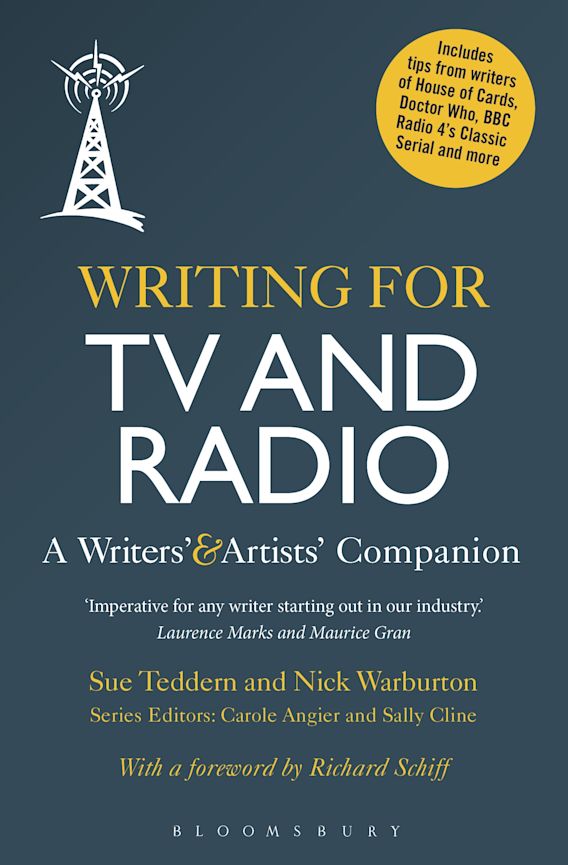In this extract from the Writers' & Artists' Companion to Writing for TV and Radio, co-writer Sue Teddern shares a useful formula for plotting a sitcom.

The following technique works well if you’re creating a sitcom with a main plot, subplot and running gag. I’m assuming that you have your characters and their world mapped out.
Take a large piece of paper and make three columns, labelled A-C.
- The ‘A’ column signifies plot that affect your characters’ world, e.g. their home or workplace.
- The ‘B’ column is for personal and emotional plots.
- The ‘C’ column is something small-scale that complicates/contrasts with the ‘A’ and ‘B’ plots.
Force your brain to fill each column with ten ideas. They can be half-formed, cliched, off-the-wall, dull, daft, desperate. Don’t think, just write! The faster the better.
Now look through your thirty ideas and link up one plot from each column to make a good episode.
For example, halfway down column ‘A’ you’ve written: ‘Jo must re-apply for her job.’ At the top of column ‘B’, you have: ‘Dave’s mum Sally has come to stay.’ And somewhere in Column ‘C’, you’ve scrawled: ‘New iPad???’
Can these three random thoughts work together to make one episode?
Kick them around, see how they impact on each other. For example:
- Would Jo’s inability to set up her new iPad foil her chances to reapply for the job?
- Might Sally, who claims she hates technology, become obsessed with Twitter or turn into an evil ‘troll’ on Jo’s iPad? Could this affect the job plot somehow?
- How does Sally indulge or annoy Dave whenever she visits?
- Could Sally’s presence distract Jo from preparing for her job interview in some way?
- How does the new iPad mess things up?
From your three columns of plots, you should be able to link together enough ideas to create several good episodes. You may even find that two As and a B will do it; or one B and two Cs.
Once you settle on your A, B and C plots, it helps to break each one down into three acts. Remember that you’re looking for SHIGWIGB: something happens, it gets worse, it gets better.
For example:
‘A’ plot: Job
Act 1: Jo learns from her boss that she must reapply for her job. She’s horrified.
Act 2: Sally accidentally deletes Jo’s all-important interview presentation from the new iPad.
Act 3: Jo’s boss is arrested for fraud and Jo is off the hook. Phew!
‘B’ plot: Sally’s visit
Act 1: Dave grudgingly invites Sally to stay.
Act 2: Tension, rows, resentment between mother and son. Jo bears the brunt.
Act 3: Sally and Dave pretend Jo is causing the tension, which gives Sally permission to go home.
‘C’ plot: New iPad
Act 1: Dave buys an iPad for Jo from his unreliable friend, Tim.
Act 2: The iPad was cheap for a reason! It has Polish spellcheck and no memory.
Act 3: Sally meets an online Lonely Heart from Warsaw. She buys the iPad from them.
Now arrange the plots into a cohesive episode. You might end up with something like this:
- Dave grudgingly invites Sally to stay.
- Jo learns from her boss that she must reapply for her job. She’s horrified.
- Dave buys an iPad for Jo from his unreliable friend, Tim.
- The iPad was cheap for a reason! It has Polish spellcheck and no memory.
- Sally accidentally deletes Jo’s all-important interview presentation from the new iPad.
- Tension, rows, resentment between mother and son. Jo bears the brunt.
- Sally and Dave pretend Jo is causing the tension, which gives Sally permission to go home.
- Jo’s boss is arrested for fraud and Jo is off the hook. Phew!
- Sally meets an online Lonely Heart from Warsaw. She buys the iPad from them.
Your episode may still not be ready to write. But it’s not far off and you now have a good sense of how each plot impacts on the other two, which will give you greater narrative drive and increased comedic possibilities.
Comments